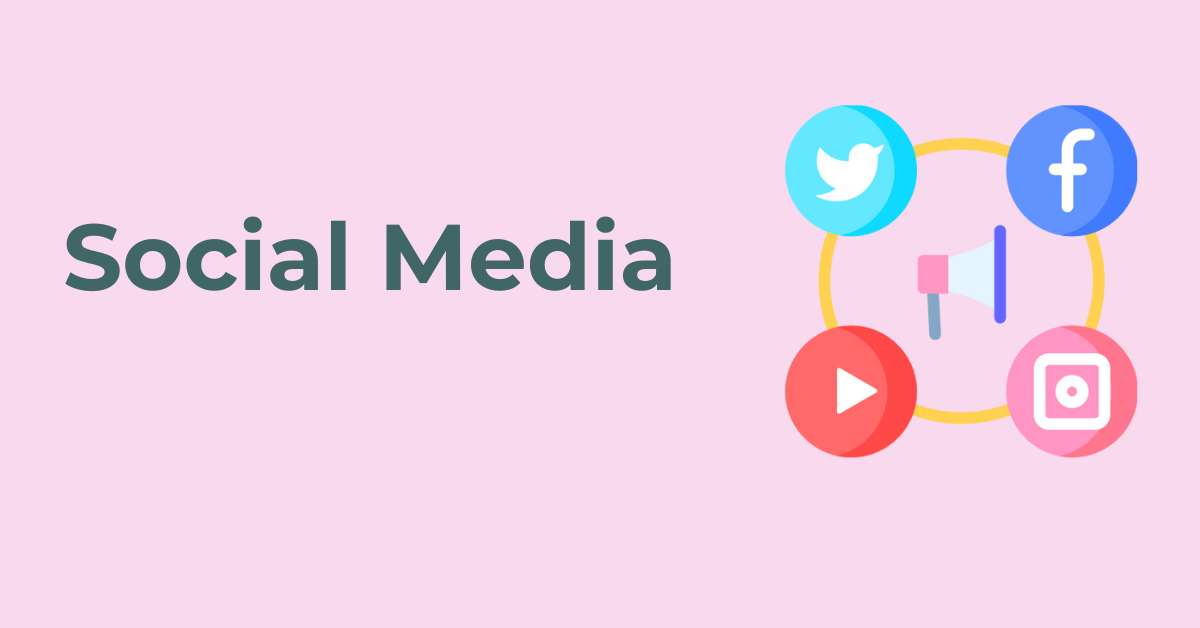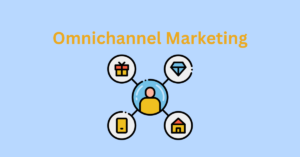Since the advent of social media, the way to communicate and consume content has changed. From Facebook and Instagram to LinkedIn and TikTok, platforms, once intended mainly for social communication, now have become powerful business tools for businesses, marketers, and influencers. Social media offers the deepest engagement possible, branding, and business growth. Therefore, the intent of this blog is to explore how social media could be viewed as affecting marketing, its relevance in it, and strategies as applied to reach success.
HOW SOCIAL MEDIA HAS CHANGED-
Social media began as a tool to help keep in touch with friends and family, but over the last twenty years, social media has metamorphosed into a worldwide marketing and business force. Platforms from Facebook (2004), Twitter (2006), and Instagram (2010) mushroomed within almost no time when companies found that they were able to connect directly with consumers. Businesses began using these platforms in order to increase brand awareness, market products, and gain consumer insights. What gives social media such incredible strength is that it can facilitate real-time interaction, and brands can thus communicate with consumers in real-time. It allows for personalization not possible with traditional marketing avenues like television or radio. Today, more than 4.9 billion use social media across the globe, and so it has become an important platform to focus on for brand access to their target market.
Relevance of Social Media to the Business: Social media is no longer just a fad; for businesses, it has become a critical component of any business’s marketing strategy. Here are some of the major reasons why social media is important for businesses:
1. Brand Awarenes:
Social media platforms greatly provide an avenue for brand awareness. With a high number of active users, brands are in a great position to market their products, services, and cause to reach out to a global audience. Brands that have significant presence on their social media tend to increase recognition, hence raising confidence among the consumers.
2. Customer Engagement:
The primary advantage of social media is that it is interactive. Brands can connect face-to-face with their audience, directly commenting on their posts, liking, sharing, and direct messages. This two-way communication process creates deeper relationships with consumers and the brand, eventually fostering loyalty and long-term relationships.
3. Targeted Advertising:
Facebook, Instagram, and LinkedIn are social media channels that have powerful advertisement capabilities for businesses to target narrowly based on interests and behavior. Such narrow targeting will ensure the right business reaches the audience for increased chances of conversion and sales.
4. Cost-Effective Marketing:
Social media marketing costs are much lower than any other form of advertising. In fact, aside from paid advertising, most other good things about social media, such as organic reach and brand engagement, are for free. Small businesses can hugely benefit from social media to build small businesses without using a lot of money to promote.Through social media, companies get immediate reactions to their products from their customers, whether in the form of reviews, comments, or shares. This provides someone with a real-time and unfettered view of consumer preferences, problems, or areas to improve their offerings.
6. SEO Benefits:
Although social media signals do not directly influence SEO rankings, an active and optimally optimized social media presence indirectly positively impacts your website’s SEO performance. Moreover, user sharing of your content through the various social channels will actually garner more clicks to your site, which can elevate visibility and brand authority.
Most Popular Social Media Channels and How to Leverage Them-
Just as the audience and purpose vary, different social media platforms cater to different audiences and serve various purposes. Here’s a breakdown of some of the most popular ones and how businesses can get the most out of them:
1. Facebook:
With 2.9 billion people using it each month, Facebook is one of the largest and most influential social media resources for businesses. Businesses can complete elaborate profiles, share updates, and serve very targeted advertisements. Additionally, brands can sell directly through the service using tools like Facebook Shops, making shopping streamlined and easy.Best For: Brand awareness, customer engagement, paid advertising.-Audience Ranges from millennials to older generations.
2. Instagram:
Instagram is, of course, visual – which well suits brands that want to depict products and behind-the-scenes action as well as partnerships with influencers. Features such as Stories and Reels allow brands creative engagement with followers and turning them into customers.– Best For: Visual branding, influencer marketing, e-commerce.– Audience: Primarily for millennials and Gen Z.
3. LinkedIn:
LinkedIn is a professional network used for B2B marketing, thought leadership, and recruitment. The company can use this platform to share industry insights and connect with other professionals, thus increasing the authority and establishing brand reputation with long-form content on articles and company updates. – Best For: B2B marketing, professional networking, thought leadership.– Targeted Audience: Professionals, business owners, decision-makers.
4. Twitter:
Twitter is best suited for posting real-time interactions, announcements, and services for customers. Brands need to be wordy and engaging as there is a character constraint; hence it is perfect for news, trends, updates regarding live events, etc.– Best Used For: News, customer service, real-time interaction.– Target Audience: Broad, but especially millennials and industry leaders.
5. TikTok:
TikTok is storming the social media world with its short, snappy videos. Businesses can gain access to a younger audience by entertaining, authentic, and viral content on TikTok. The very best results on this platform come when creativity and a small touch of humor are added in the form of brands.– Best for: Viral marketing, influencer collaborations, youth engagement.– Audience: Primarily Gen Z and younger millennials.
How to Design an Effective Social Media Strategy-
Having a presence on social media is quite different from having an effective social media strategy. Here are some essential steps to craft a winning social media strategy:
1. Define Your Goals:
The first step for most social media strategies is defining objectives. Is your goal to build brand awareness, increase visitors to the website, or generate leads? Clear and well-defined goals will guide your content creation and engagement strategy.
2. Know Your Audience:
Knowing who will view and engage with your content is crucial. Researching your audience can provide insight into their likes, habits, and which platforms they frequent the most. You will then be assured that your content is indeed being communicated to the correct individuals.
3. Consistent Branding:
Brand images need to be consistent across all your social media platforms. This applies to logos, color schemes, and brand messaging. A consistent brand image fosters trust and recognition.
4. Create Interesting Contents:
The nature of content to be created varies with the intended target and the kind of audience it is for. For example, if you are creating content for an Instagram, visually appealing pictures and videos are needed, while an article or a case study would be more appropriate for a LinkedIn. Experiment using videos, polls, infographics, and live streams so you can identify what captures the attention of the audience.
5. Monitor and Improve:
Social media marketing is a continuous process. Monitor how your posts are performing. Keep track of engagement, reach, and conversion metrics to find areas where you need to adjust your strategy based on what those numbers say. Try using tools for insights on Google Analytics and Facebook Insights, or Hootsuite for that matter.Due to the development of technology, social media sites and approaches will evolve. Changes in trends with artificial intelligence, augmented reality, and personal content will change the face of social media marketing, making it keep on coming. Thus, with gaining ahead of these trends and adapting through changes, brands would be well-positioned for long-term success.
Conclusion:
It is rather a tool for marketing and can bring about gigantic changes in the business within a click, wherein whether it is brand awareness, customer engagement, or selling. Social media gives birth to various avenues of growth, and businesses can capitalize on this for their organizations to yield the best benefits in this world so digitalized and informational.




